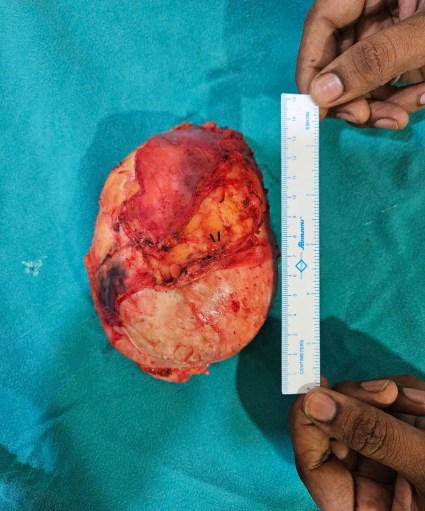A young 36-year-old male came in with symptoms including difficulty holding urine, inability to pass stool, and a growing swelling in his lower abdomen for the past year. Despite seeking advice, his condition did not improve. Eventually, he sought care at higher medical centres, where he was diagnosed with a large tumour pressing against his rectum and urinary bladder, occupying the space between his tailbone.
He underwent several investigations and waited patiently, but no one stepped forward to perform the pelvic tumour removal surgery. He became despairing, believing he would have to live with the tumour and its associated problems for the rest of his life. At the insistence of a family member, the patient met with me. After taking his history, examining him, and reviewing all the investigations, it was clear that pelvic tumour removal surgery was necessary.

However, the surgery presented numerous challenges. Firstly, the tumour was deeply fixed in the pelvis, raising doubts about its removal. Secondly, due to its proximity to the rectum, there was a risk of needing a temporary stoma if the rectum was affected. Thirdly, the tumour was pushing against the urinary bladder and ureters, making it crucial to protect these structures during the procedure. Lastly, the nerves controlling urinary and sexual functions were at high risk.

These challenges were thoroughly discussed with the patient, who ultimately agreed to proceed, expressing his desire to fight despite the difficulties. The entire surgical team, although sceptical, was well-prepared and motivated to succeed. The surgery was indeed challenging, but we proceeded methodically as planned. After about three hours, we successfully removed the tumour. Thankfully, there was no injury to the rectum or urinary system, and we managed to preserve the nerves.
The pelvic tumour removal surgery not only eliminated the tumour but also restored the patient’s quality of life without causing permanent functional deficits. The patient was discharged from the hospital happy and safe on the third day after his surgery. We wish him a quick recovery.

